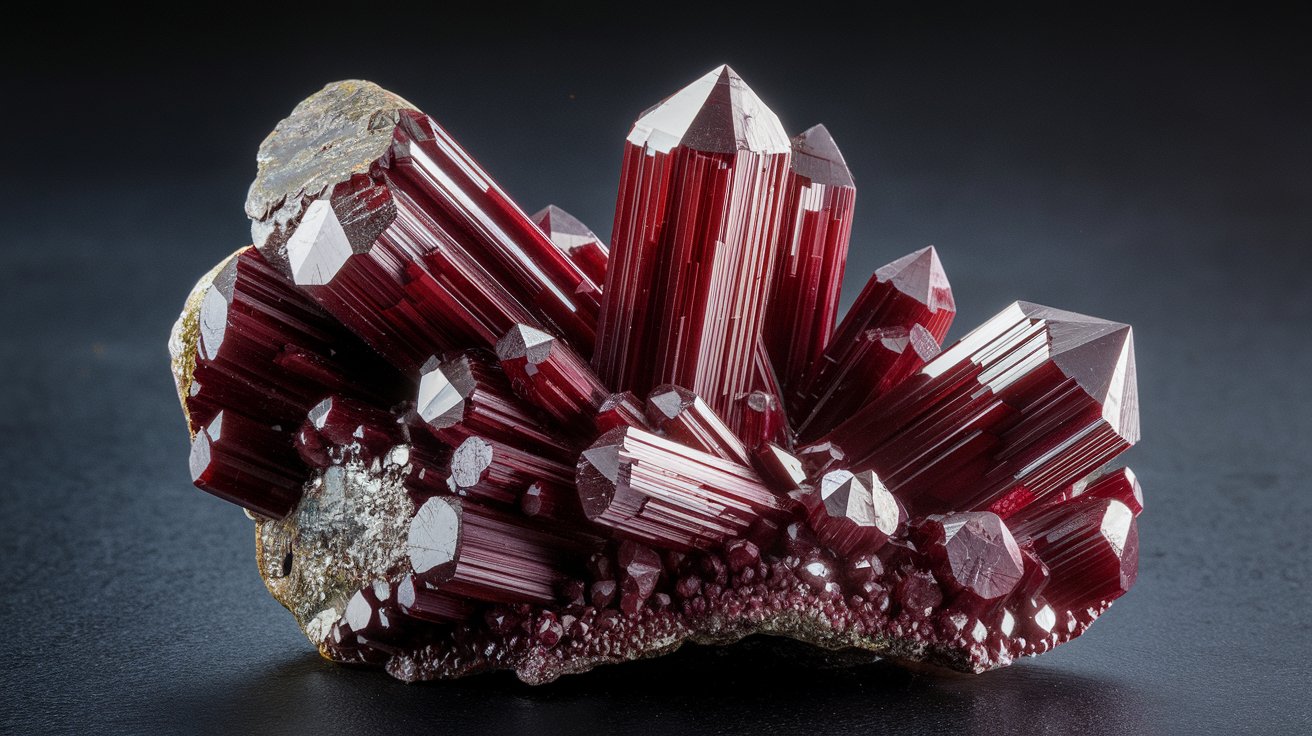
Krutovite, a rare mineral, often intrigues those fascinated by geology and mineralogy. What makes Krutovite so special? This mineral, primarily composed of nickel and arsenic, forms in hydrothermal veins and is known for its metallic luster and unique crystal structure. Found in select locations worldwide, Krutovite is not just a collector's gem but also a subject of scientific study due to its unusual properties. Its rarity and distinctive features make it a prized find for mineral enthusiasts. Understanding Krutovite involves exploring its formation, composition, and the geological conditions that give rise to this fascinating mineral. Whether you're a budding geologist or a seasoned collector, Krutovite offers a glimpse into the Earth's complex processes and the beauty hidden beneath its surface. Dive into the world of Krutovite and uncover the secrets of this extraordinary mineral.
Key Takeaways:
- Krutovite is a rare, shiny mineral with a unique chemical composition, making it a prized find for collectors and scientists. Its magnetic properties and stability set it apart from other minerals.
- Studying Krutovite helps us understand Earth's geology and the formation of rare minerals. Techniques like X-ray diffraction and electron microprobe analysis reveal its atomic arrangement and chemical composition.
What is Krutovite?
Krutovite is a rare mineral that has intrigued scientists and collectors alike. Its unique properties and fascinating history make it a subject of interest for many. Let's explore some intriguing facts about this captivating mineral.
-
Krutovite is a rare mineral found in only a few locations worldwide. Its scarcity makes it highly sought after by collectors.
-
Named after a Russian geologist, Krutovite honors the contributions of V. Krutov, who made significant advancements in mineralogy.
-
It belongs to the sulfide mineral group, which includes minerals composed of sulfur combined with metals or semimetals.
-
Krutovite has a metallic luster, giving it a shiny, reflective appearance that attracts attention.
-
Its color ranges from gray to black, with some specimens exhibiting a bluish tint, adding to its visual appeal.
-
The mineral's crystal structure is orthorhombic, meaning it has three axes of unequal length, all perpendicular to each other.
-
Krutovite is often associated with nickel deposits, as it contains nickel as a primary component.
-
It is typically found in hydrothermal veins, which are fractures in rocks filled with mineral-rich fluids.
-
The mineral is known for its high density, making it heavier than many other minerals of similar size.
-
Krutovite is not used in commercial applications, primarily due to its rarity and the difficulty in extracting it.
Where Can Krutovite Be Found?
Finding Krutovite is like searching for hidden treasure. Its limited occurrence makes it a prized find for geologists and mineral enthusiasts.
-
Krutovite has been discovered in Russia, particularly in the Ural Mountains, a region known for its rich mineral deposits.
-
It has also been found in Canada, specifically in the Sudbury Basin, an area famous for its nickel-copper mining.
-
Small deposits exist in Australia, adding to the global distribution of this rare mineral.
-
The mineral is often located in remote areas, making access and extraction challenging.
-
Krutovite can be found in association with other nickel minerals, such as pentlandite and millerite.
What Makes Krutovite Unique?
Krutovite's distinct characteristics set it apart from other minerals, making it a subject of fascination for scientists and collectors.
-
Its unique chemical composition includes nickel, sulfur, and iron, giving it distinct properties.
-
Krutovite is known for its stability, resisting weathering and chemical changes over time.
-
The mineral's hardness is relatively low, making it easy to scratch compared to other minerals.
-
It exhibits magnetic properties, which can be used to identify it in the field.
-
Krutovite's rarity and beauty make it a valuable addition to any mineral collection.
How is Krutovite Studied?
Studying Krutovite provides insights into its formation and the geological processes that create such rare minerals.
-
Scientists use X-ray diffraction to analyze its crystal structure, revealing details about its atomic arrangement.
-
Electron microprobe analysis helps determine its precise chemical composition, identifying the elements present.
-
Spectroscopic techniques are employed to study its optical properties, such as color and luster.
-
Field studies involve collecting samples from known locations, providing data on its geological context.
-
Research on Krutovite contributes to our understanding of sulfide minerals and their role in Earth's geology.
Final Thoughts on Krutovite
Krutovite, a rare and fascinating mineral, offers a glimpse into the complexity of Earth's geological processes. Its unique composition and formation make it a subject of interest for both geologists and mineral enthusiasts. Found in specific locations, this mineral's rarity adds to its allure. Understanding krutovite not only enriches our knowledge of Earth's mineral diversity but also highlights the intricate interactions within our planet's crust. While it may not be as well-known as other minerals, its distinctive properties and formation process make it a valuable addition to the world of geology. As we continue to study and learn from minerals like krutovite, we gain deeper insights into the natural world and the forces that shape it. This knowledge not only satisfies our curiosity but also contributes to the broader understanding of Earth's geological history.
Frequently Asked Questions
Was this page helpful?
Our commitment to delivering trustworthy and engaging content is at the heart of what we do. Each fact on our site is contributed by real users like you, bringing a wealth of diverse insights and information. To ensure the highest standards of accuracy and reliability, our dedicated editors meticulously review each submission. This process guarantees that the facts we share are not only fascinating but also credible. Trust in our commitment to quality and authenticity as you explore and learn with us.
